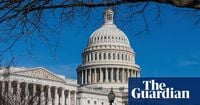A federal judge on Friday temporarily blocked President Donald Trump’s executive order that enabled the administration to fire tens of thousands of federal workers and to eliminate certain agencies entirely. The ruling puts on hold the White House’s plans to implement government-wide layoffs, including expected staff cuts at the departments of State, Treasury, Transportation, Veterans Affairs, and the Social Security Administration.
Senior U.S. District Judge Susan Illston stated in her order that federal laws give the president broad power to reorganize the government, including to order mass layoffs. However, she emphasized that the White House must also adhere to a set of rigorous legal and procedural requirements. “The President has the authority to seek changes to executive branch agencies, but he must do so in lawful ways and, in the case of large-scale reorganizations, with the cooperation of the legislative branch,” Illston, a Clinton appointee, said.
On the same day, Judge Illston ruled in favor of a coalition of unions, non-profits, and local governments, blocking large-scale mass layoffs known as “reductions in force” for 14 days. She noted that Congress did not authorize the sweeping government overhaul proposed by Trump’s administration, which has been characterized by some as chaotic and disruptive.
“As history demonstrates, the president may broadly restructure federal agencies only when authorized by Congress,” Illston remarked. The White House did not immediately respond to a request for comment regarding the ruling.
This ruling represents a significant setback for the Trump administration, which had been directed to work with the newly established Department of Government Efficiency (Doge) to identify targets for mass layoffs. The administration's restructuring plans, initiated in February, aimed at eliminating duplicative roles, unnecessary management layers, and non-critical jobs while automating routine tasks, closing regional field offices, and reducing the use of outside contractors.
Critics of the administration's approach have voiced strong concerns about the potential fallout. The coalition of plaintiffs stated, “The Trump administration’s unlawful attempt to reorganize the federal government has thrown agencies into chaos, disrupting critical services provided across our nation.” They emphasized that haphazard layoffs and reorganizations do not achieve efficiency and harm communities reliant on federal services.
Illston has scheduled a hearing for May 22 to consider a longer-lasting preliminary injunction. In her ruling, she indicated that the plaintiffs are likely to succeed on the merits of some of their claims in their lawsuit, which was filed on April 28. The lawsuit alleged that Trump exceeded his authority, as did the Office of Management and Budget, Doge, and the Office of Personnel Management, which allegedly violated administrative law.
The judge noted that the plaintiffs are likely to suffer irreparable harm without the temporary restraining order, which she said preserves the status quo. “The court here is not considering the potential loss of income of one individual employee, but the widespread termination of salaries and benefits for individuals, families, and communities,” Illston wrote in her ruling.
Illston highlighted some of the evidence presented by the plaintiffs, which included over 1,000 pages of documentation and 62 sworn declarations. For instance, she pointed out that the National Institute for Occupational Safety and Health and its Pittsburgh office had 221 of the department’s 222 workers terminated, as reported by the union. Similar alarming examples were given for local offices of the Farm Service Agency, the Social Security Administration, and Head Start, which supports early learning.
As the legal battle unfolds, the implications of this ruling could extend far beyond the immediate layoffs. The potential disruption of federal services and the impact on employees and communities are significant concerns that have been raised by the plaintiffs. With the hearing set for later this month, the stakes remain high for both the Trump administration and the various stakeholders involved.
In the broader context, this case sheds light on the tension between executive power and legislative authority. The ruling underscores the necessity for the administration to navigate the complex legal landscape when pursuing significant changes to federal operations. As the legal proceedings continue, many will be watching closely to see how this situation evolves and what it means for the future of federal employment and agency functioning.
With the clock ticking towards the upcoming hearing, the Trump administration faces mounting pressure to demonstrate compliance with legal standards while also addressing the concerns of a workforce that fears for its future. The outcome of this case may well set a precedent for how executive power is exercised in the realm of federal employment and agency restructuring.




